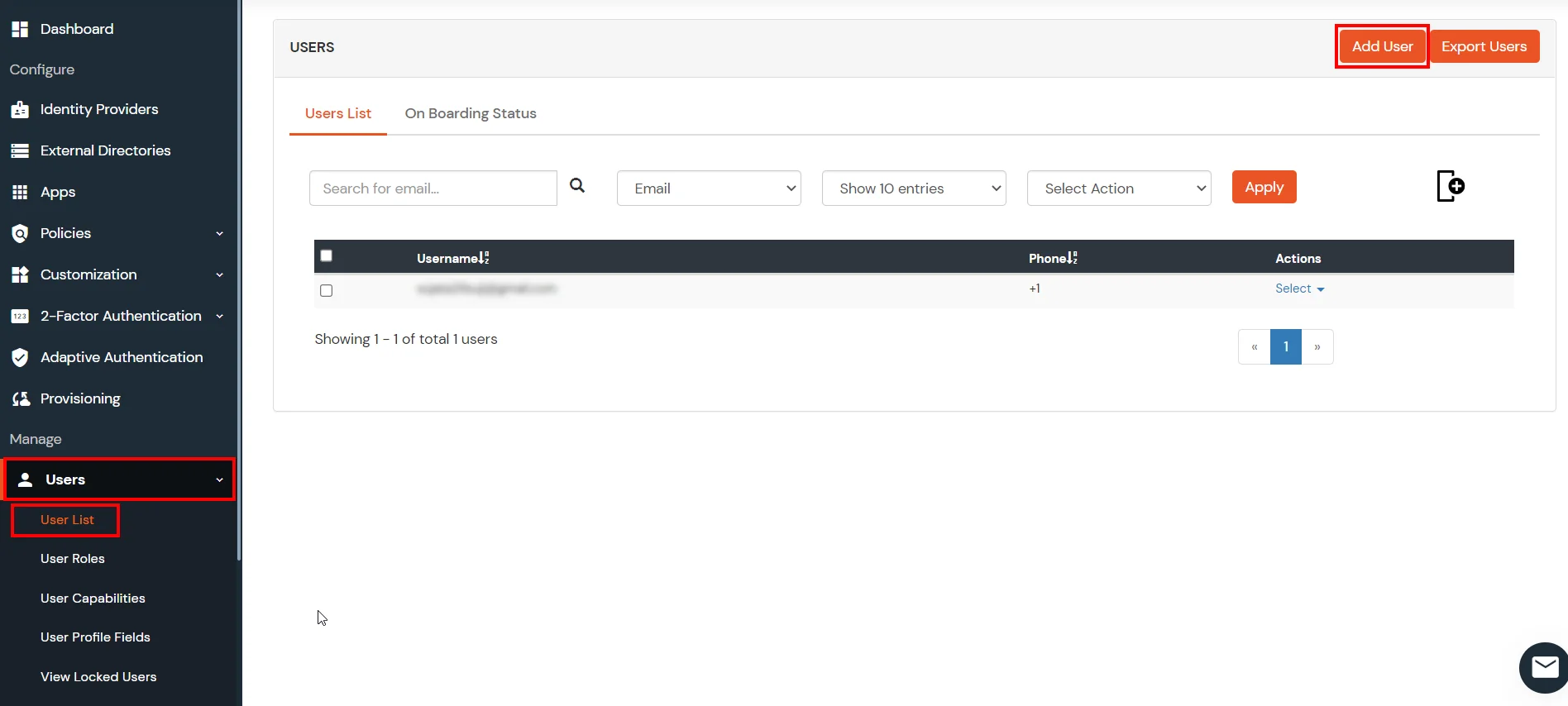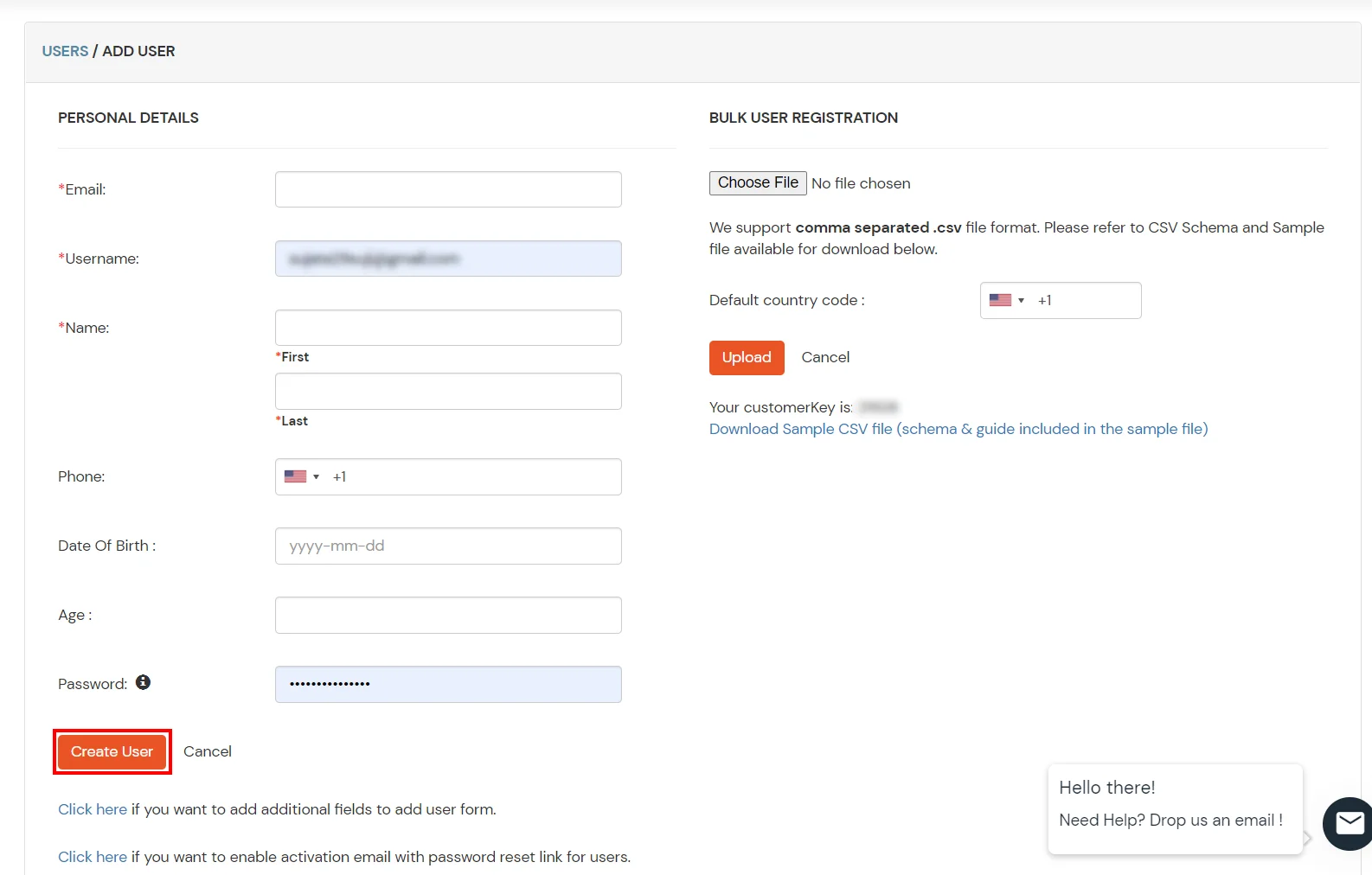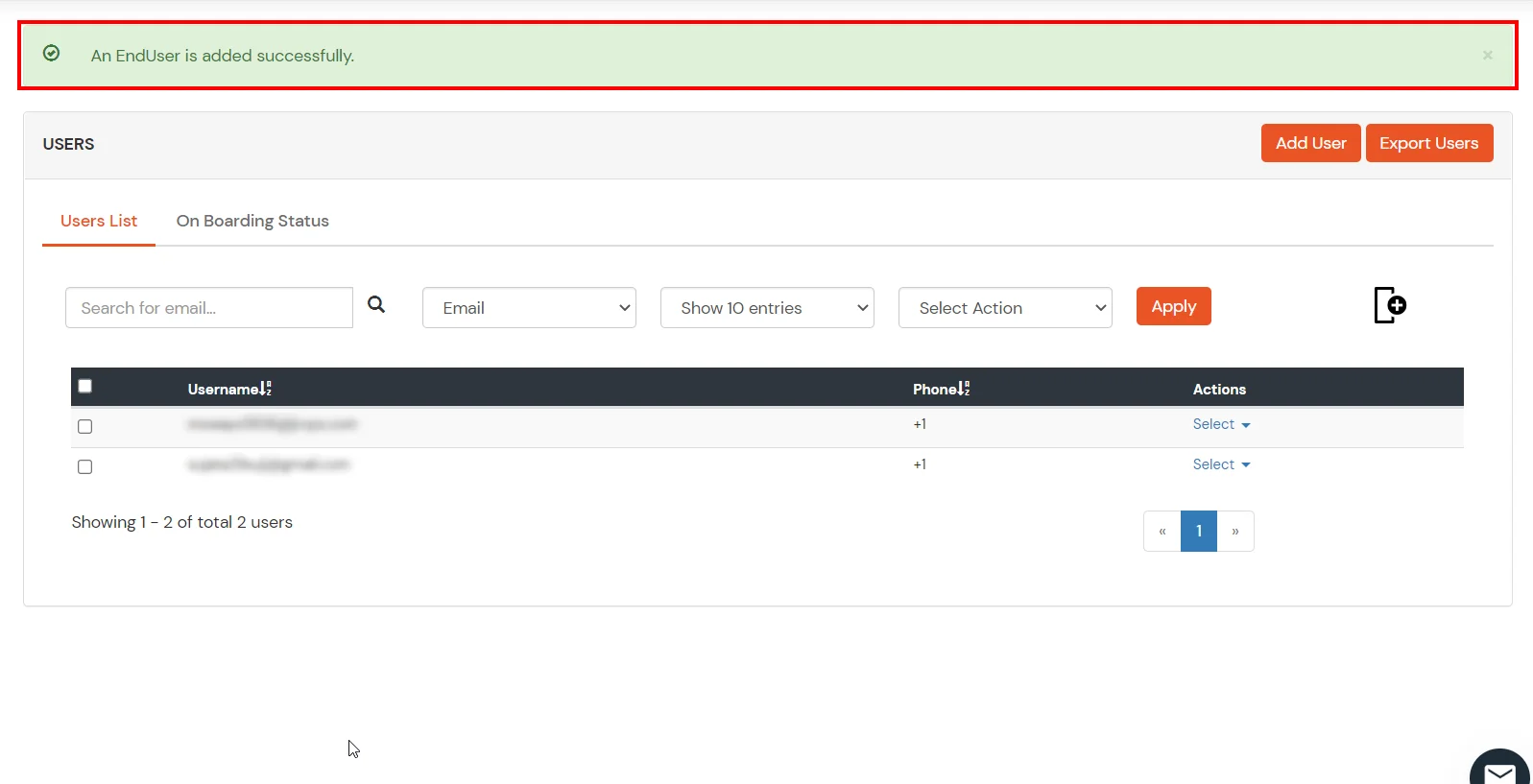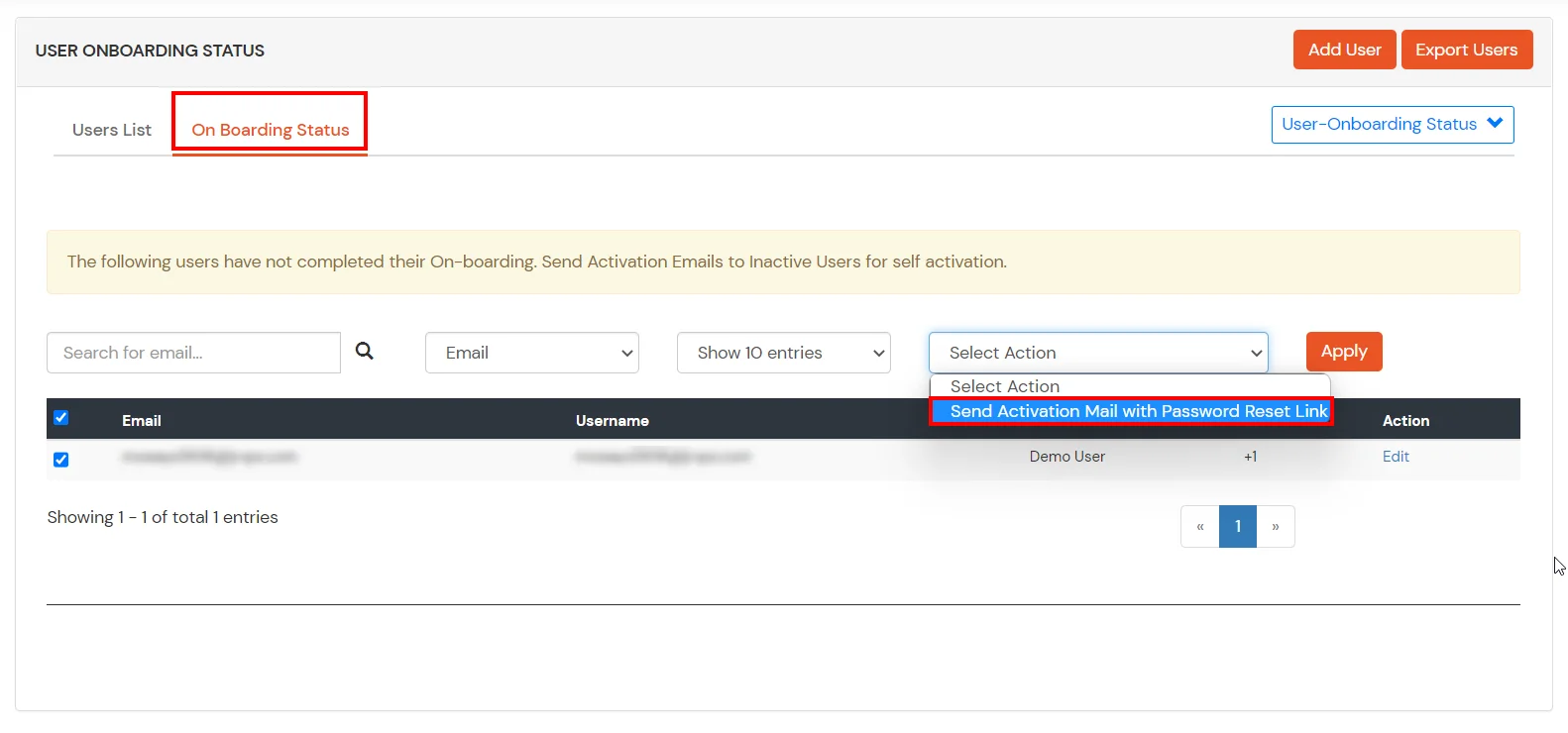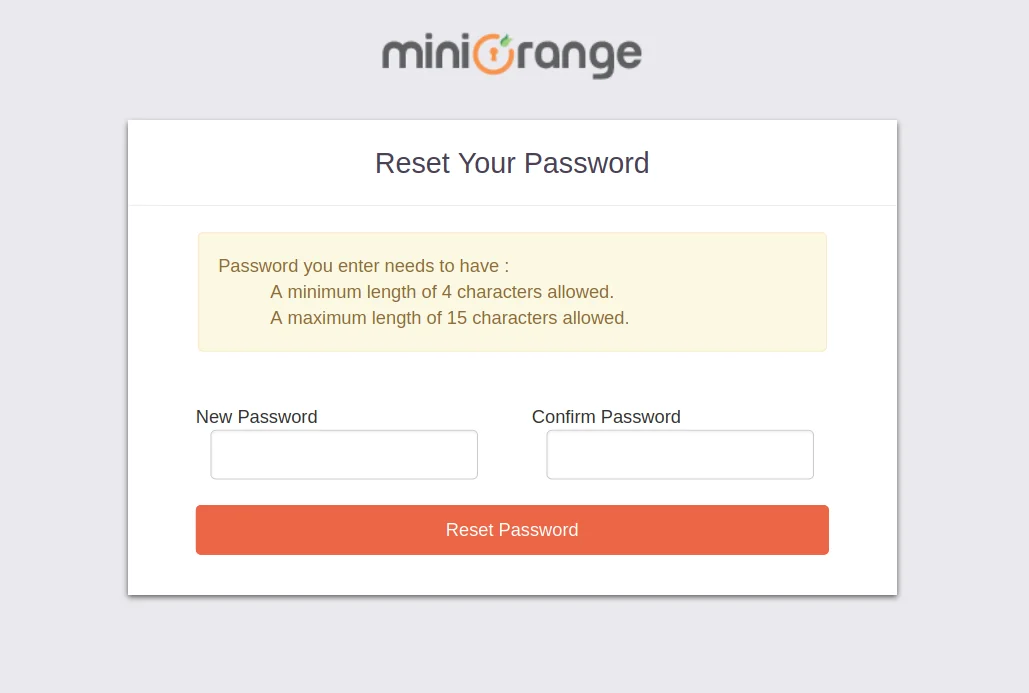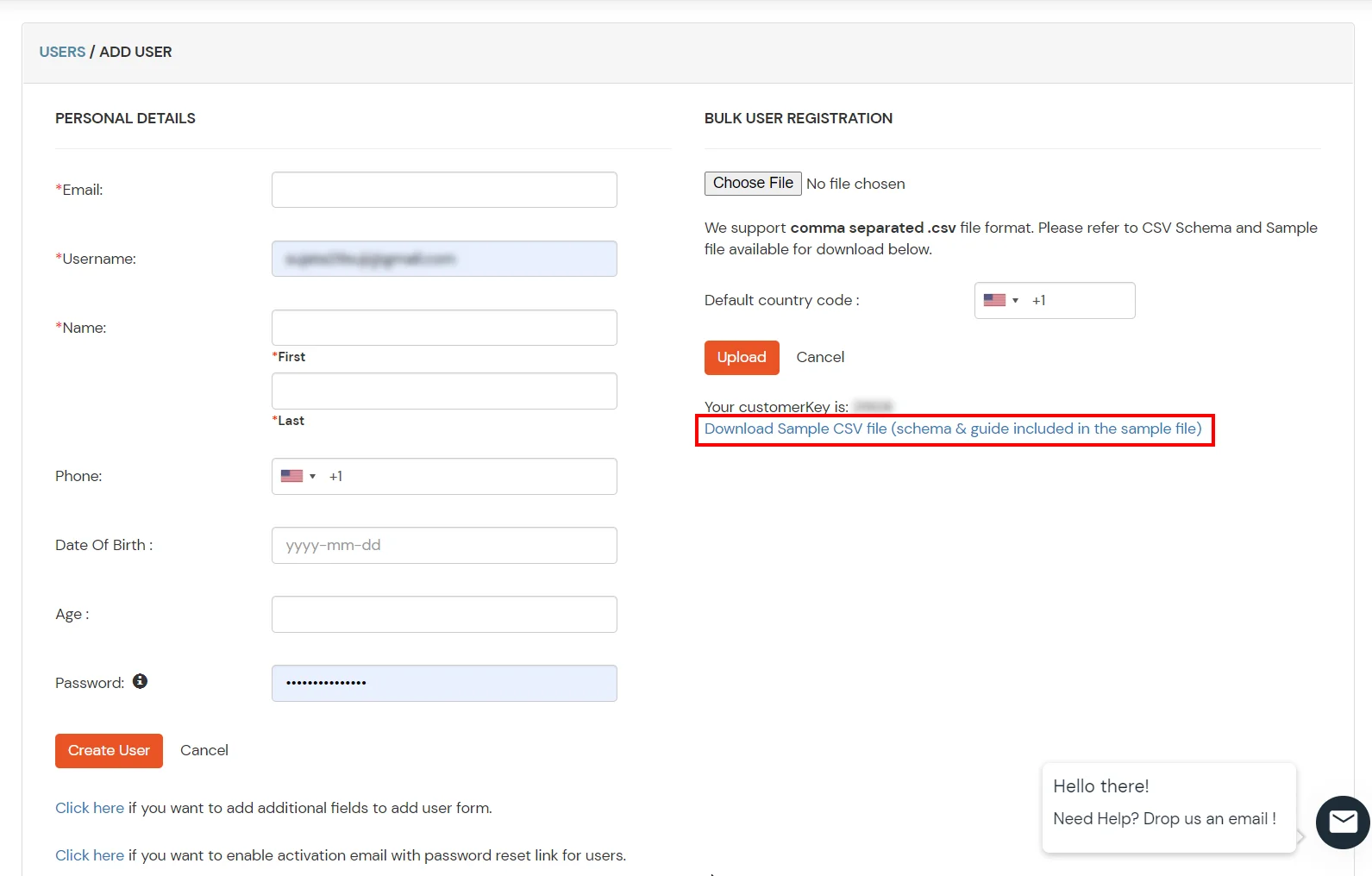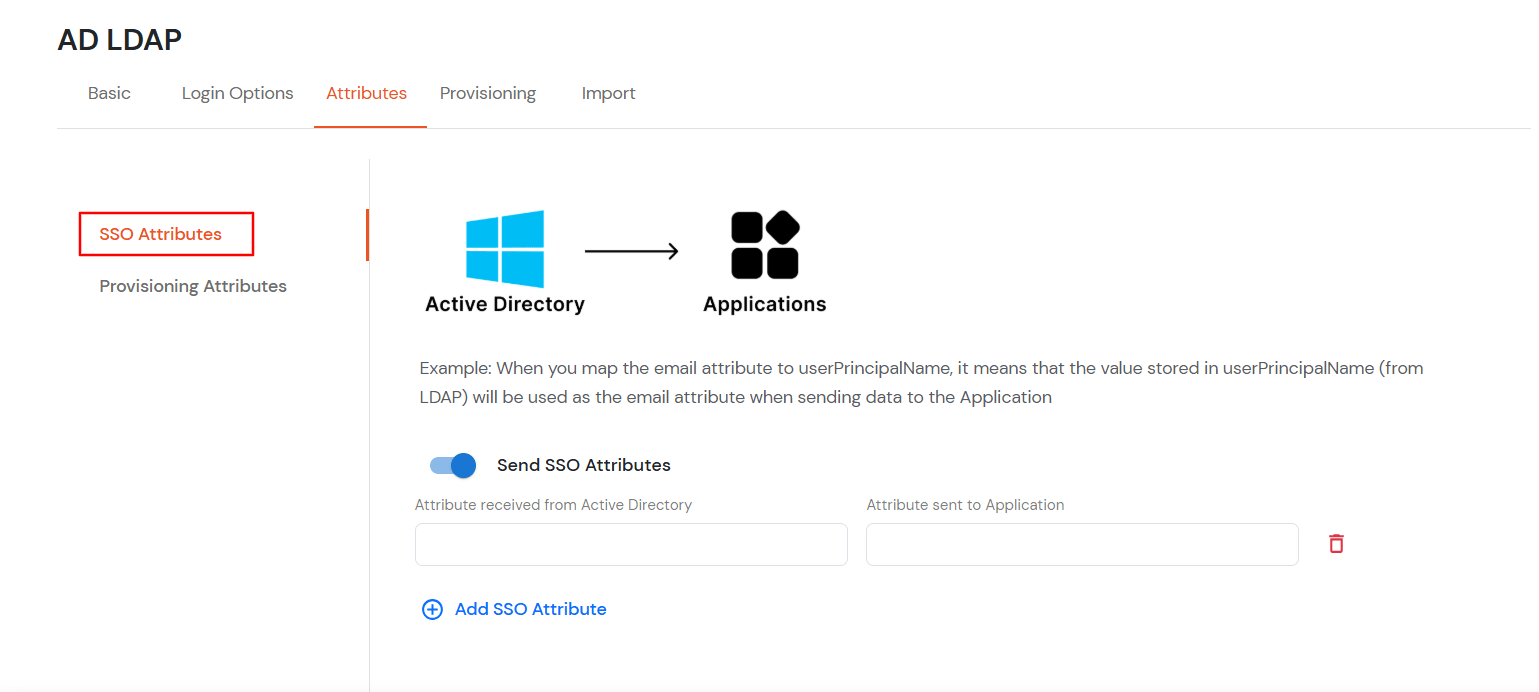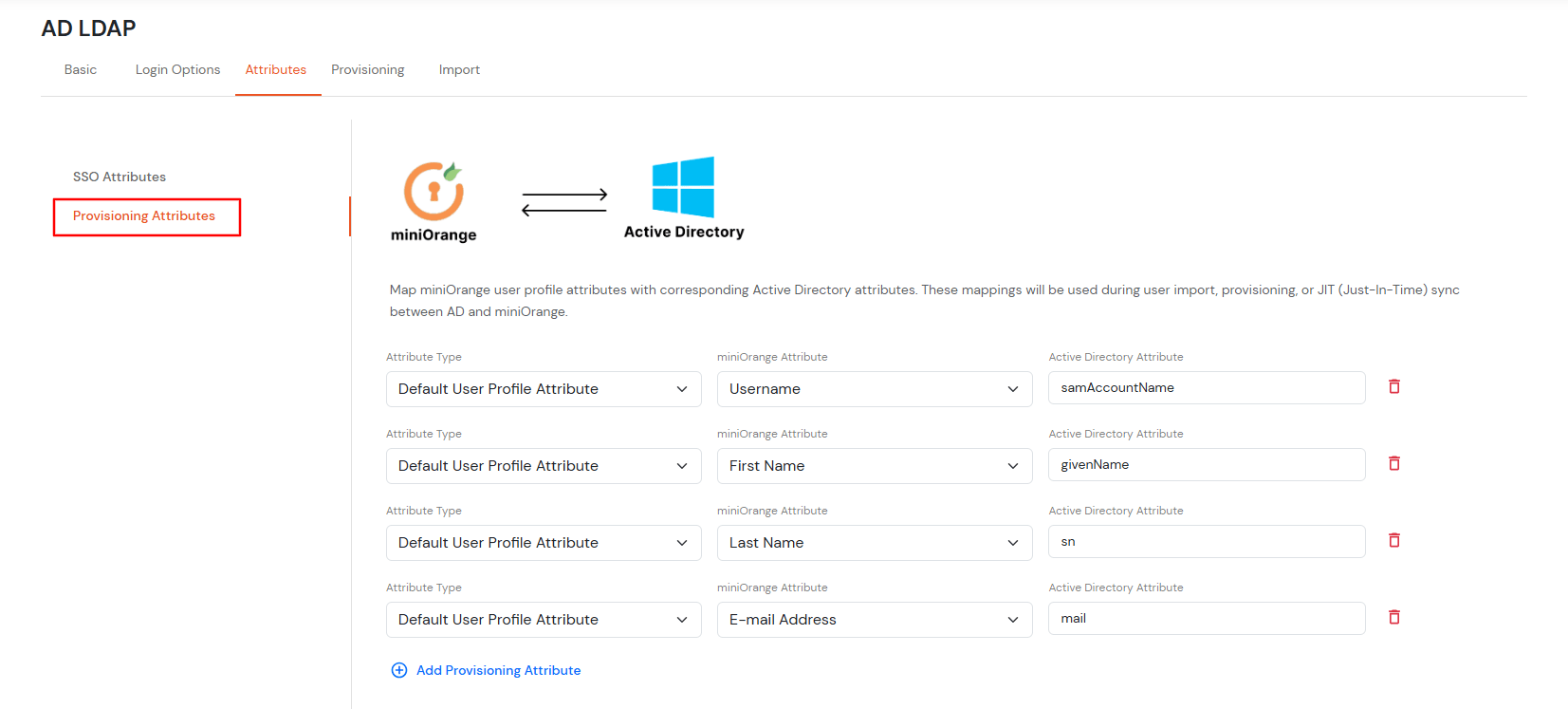How to Enable (2FA/MFA) for Ubuntu SSH?
Ubuntu SSH Two-factor Authentication solution offers a secure way to log into Ubuntu desktops, making it harder for attackers to guess passwords.
Two-Factor Authentication (2FA/MFA) adds an extra layer of security, it also lowers the risks for company servers or Ubuntu (Linux) systems.
You'll start by entering your usual username and password, and then you'll be asked for a second type of authentication to prove your identity.
miniOrange can connect to the on-premise AD (Active Directory) so that user will use their AD credentials to authenticate themselves. miniOrange Ubuntu Two-Factor Authentication (2FA) module can be installed on Linux operating systems to add Two-Factor or Multi-Factor authentication on the top of local and Remote SSH access.
miniOrange provides 15+ MFA methods for implementing 2FA for various use cases like Ubuntu. It allows IAM users and organizations to set up certain authentication and settings which includes password restrictions, restricting sign-in methods, Google or Microsoft Authenticator, Authy 2-Factor authentication app & miniOrange Authenticator app. You can follow this detailed guide to setup 2FA over Ubuntu.
Checkout details of Linux SSH and local login MFA solution and it's features.
Be Cyber Insurance compliant with miniOrange MFA solution. Read More
Get Free Installation Help - Book a Slot
miniOrange offers free help through a consultation call with our System Engineers to Install or Setup linux Ubuntu MFA / 2FA (Two-Factor Authentication) in your environment with 30 days Free trial.
For this, you need to just send us an email at idpsupport@xecurify.com to book a slot and we'll help you setting it up in no time.
Step by step guide to enable Ubuntu Two-factor Authentication
1. Adding app and policy for 2FA
- Login into miniOrange Admin Console.
- Go to Apps. Click on Add Application button.

- Select Desktop from All Apps dropdown.
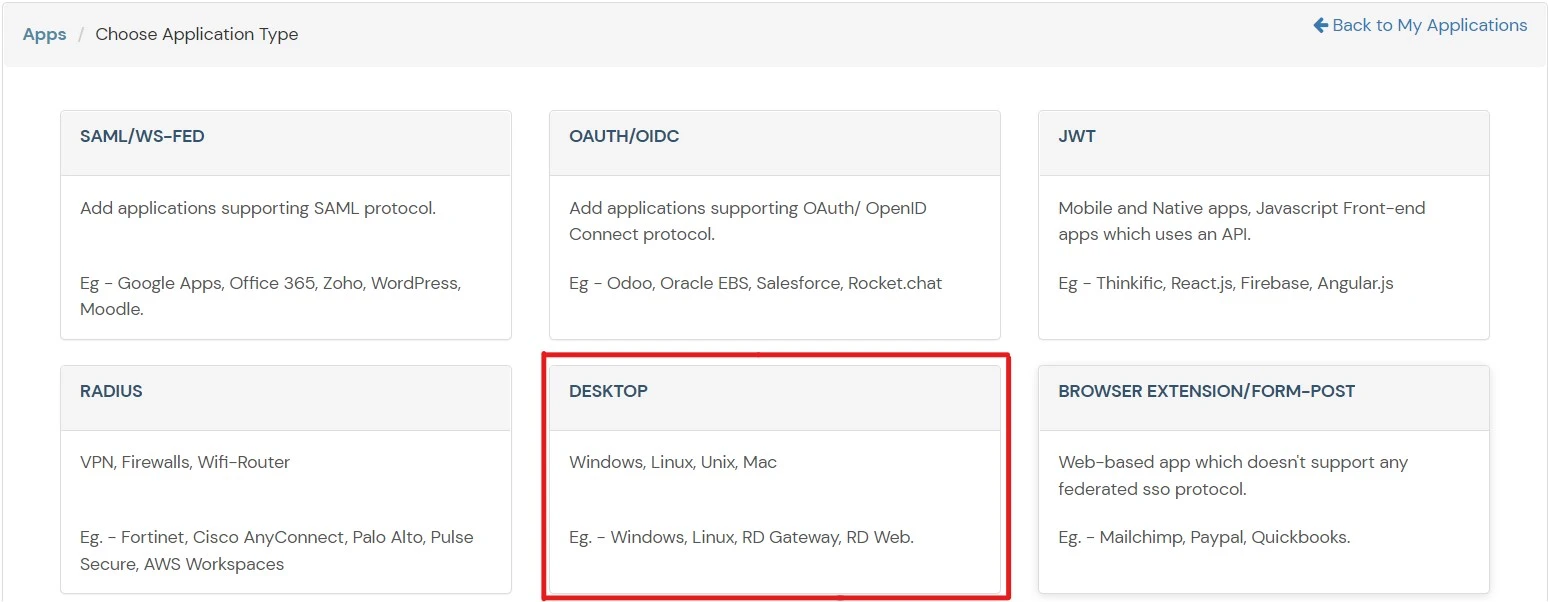
- Click on LINUX/UNIX.

- Add Display Name and click on Save.

- You will be redirected to the Policies section. Click Add Policy.
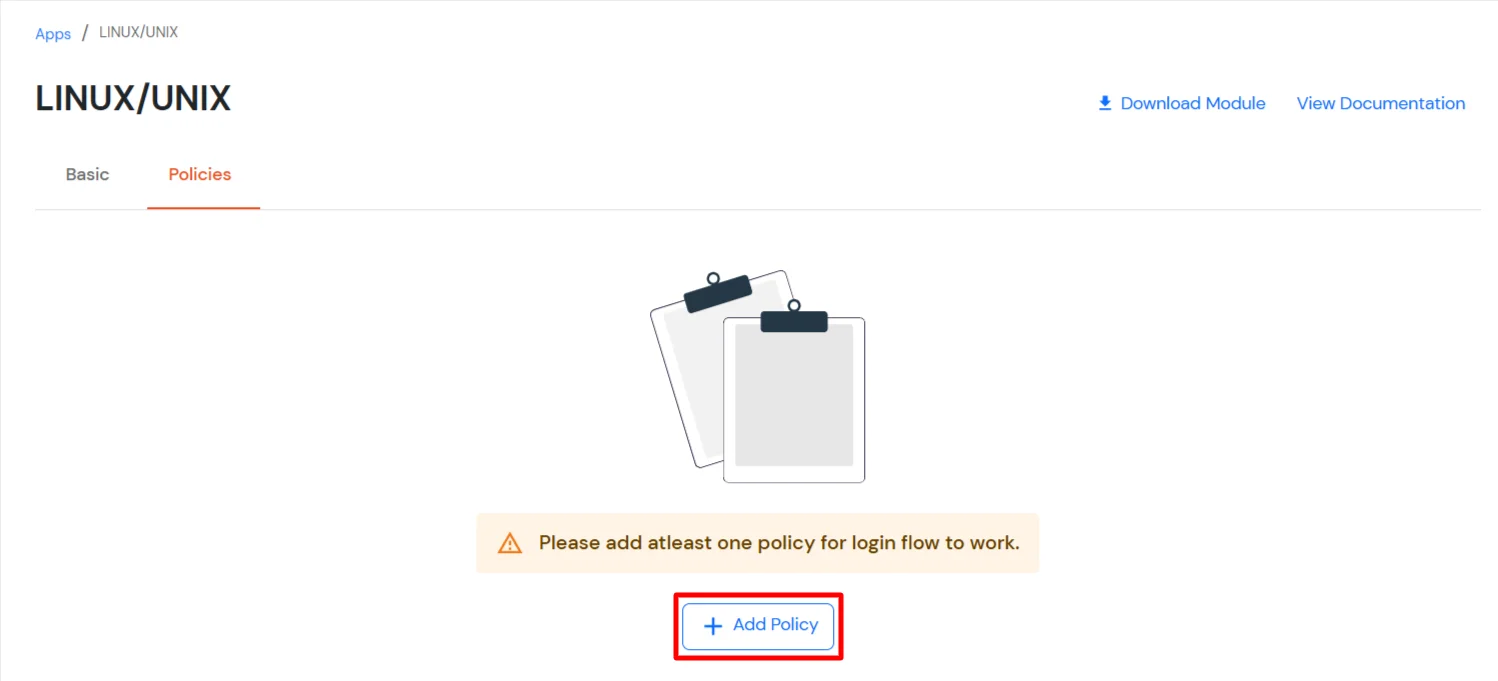
- A dialog box will appear prompting you to enter the following details:
| Group Name |
Select the group for which you wish to add this policy. For multiple groups, you can click here to add a multiple/separate policies for each group. |
| Policy Name |
You can give a name for the authentication policy. |
| First Factor |
Select the login method as Password and Password-less. You can enable 2-Factor Authentication (MFA), Adaptive Authentication and Force MFA On Each Login Attempt if required. |
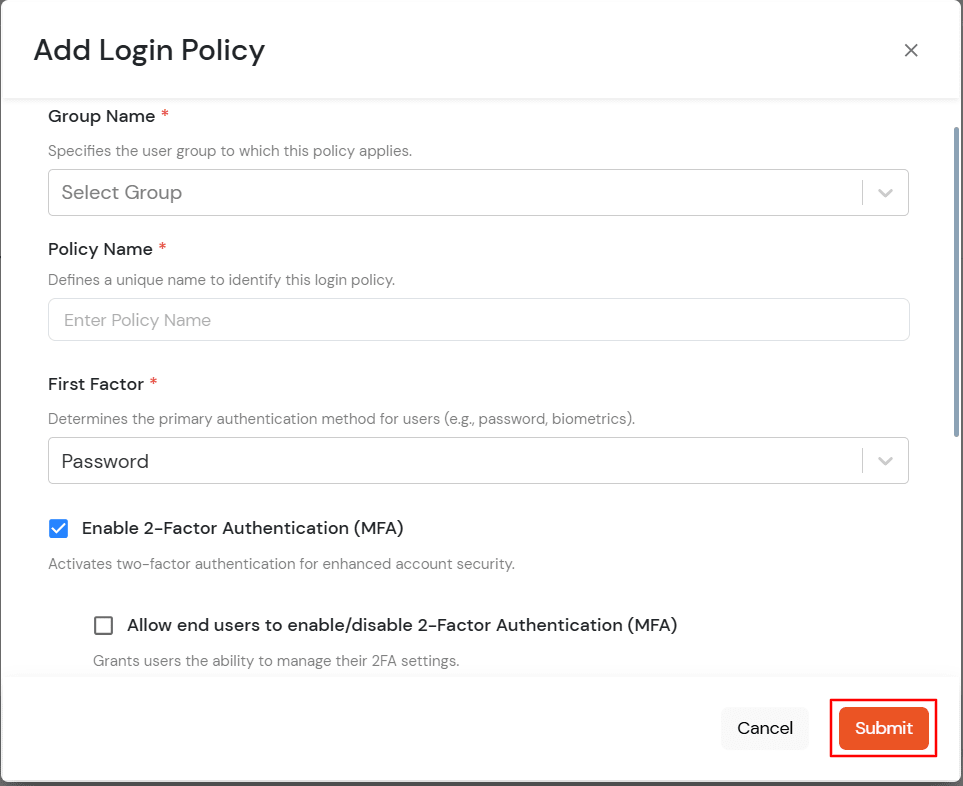
- Click on Submit.
2. Select 2FA options
- Go to 2-Factor Authentication >> Choose 2FA Options for End User.
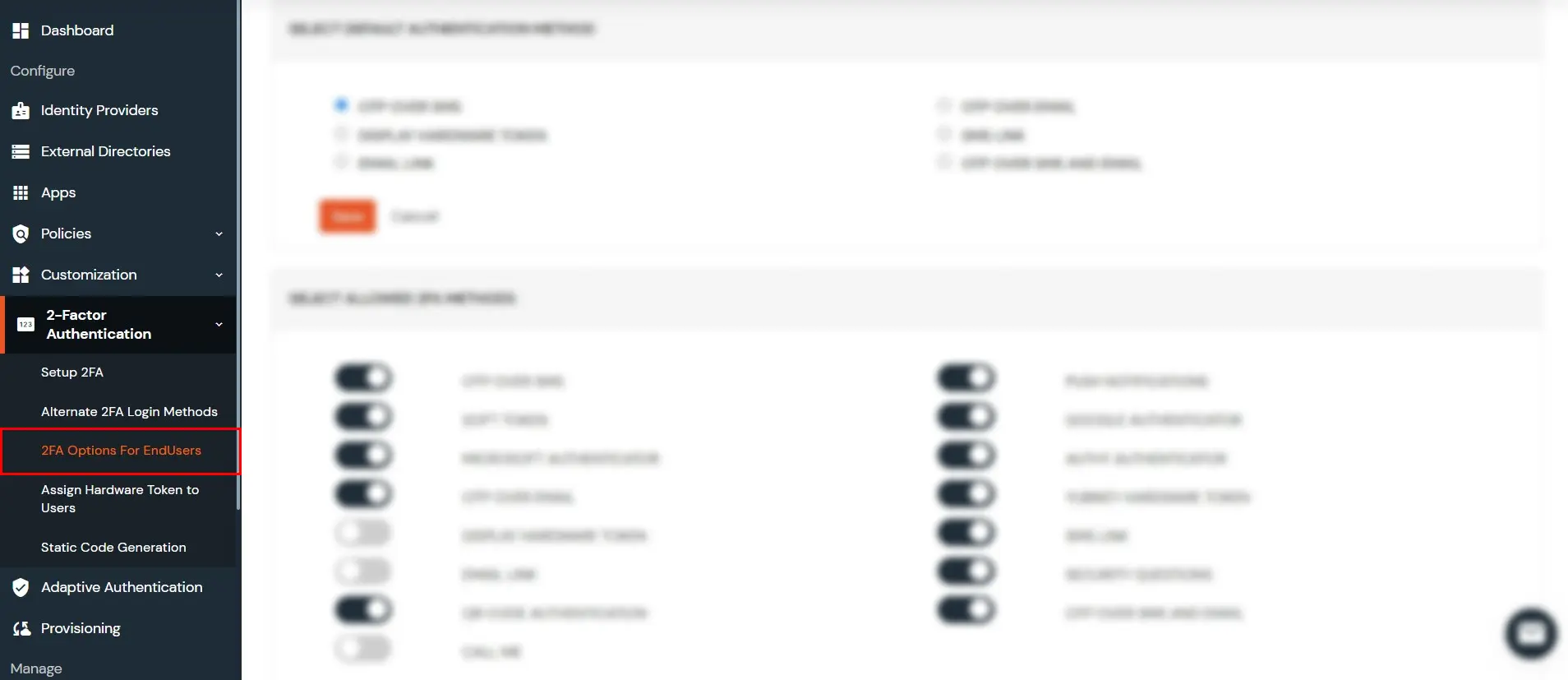
- Disable the methods you don’t want your users to configure or use for MFA
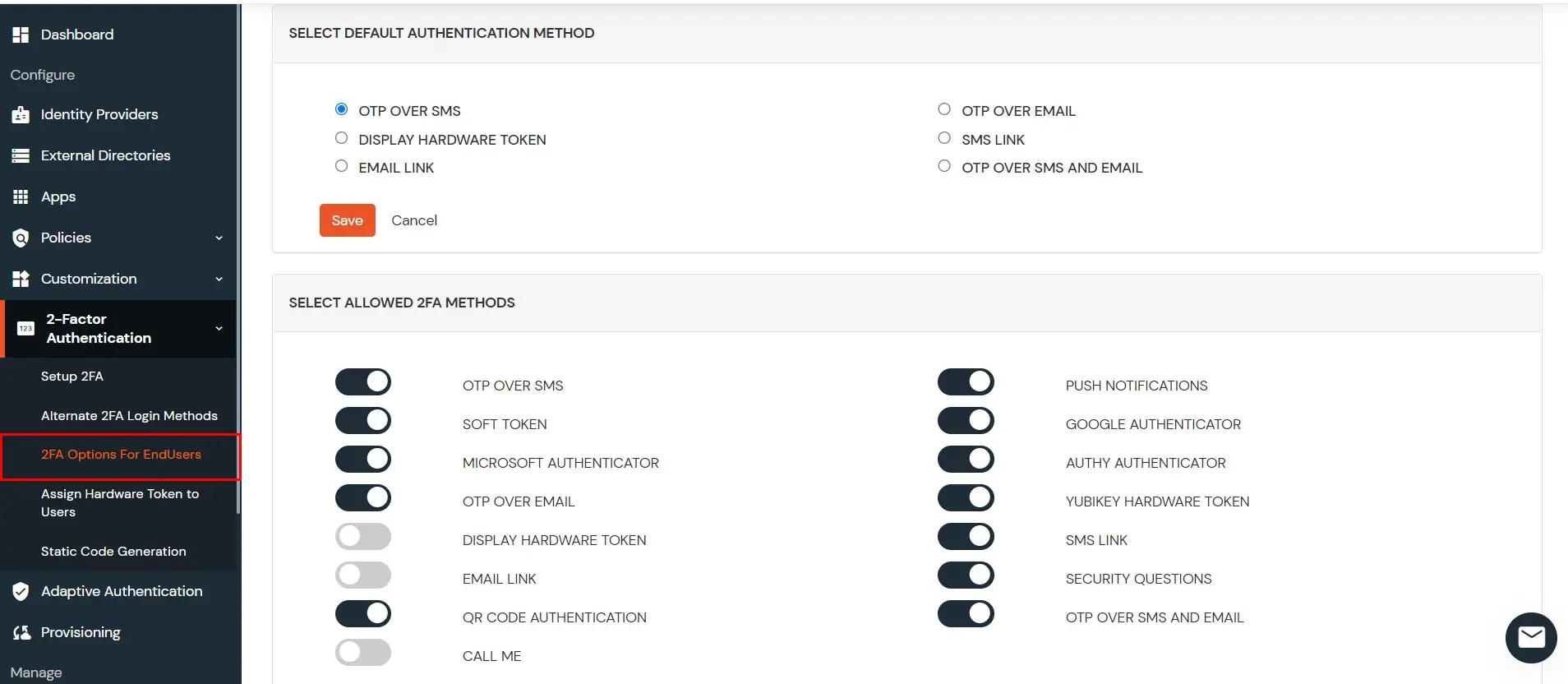
3. Setup miniOrange 2FA/MFA Provider for Linux Ubuntu
- Download the miniOrange MFA Deb package from here.
- Give execute permissions to the downloaded DEB file using the following command:
chmod a+x miniorange-mfa.deb

- Run the following command to install the miniOrange MFA package:
sudo dpkg -i miniorange-mfa.deb

| Option |
Description |
| --install |
Install the miniOrange MFA |
| --uninstall |
Remove the miniOrange MFA |
| --enable_ssh |
Enable miniOrange MFA for SSH login |
| --disable_ssh |
Disable miniOrange MFA for SSH login |
| -e |
Edit the miniOrange configuration file |
| -d |
Display the miniOrange configuration file |
| --enable_pl |
Enable Passwordless Authentication |
| --disable_pl |
Disable Passwordless authentication |
| --check |
Run troubleshooting checks for the miniOrange MFA setup |
| --test <login|sshd|sudo> <username> |
Test miniOrange MFA for the specified service (login, sshd, or sudo) for the given username |
- To start the 2FA configuration, run the following command:
sudo miniorange-mfa --install
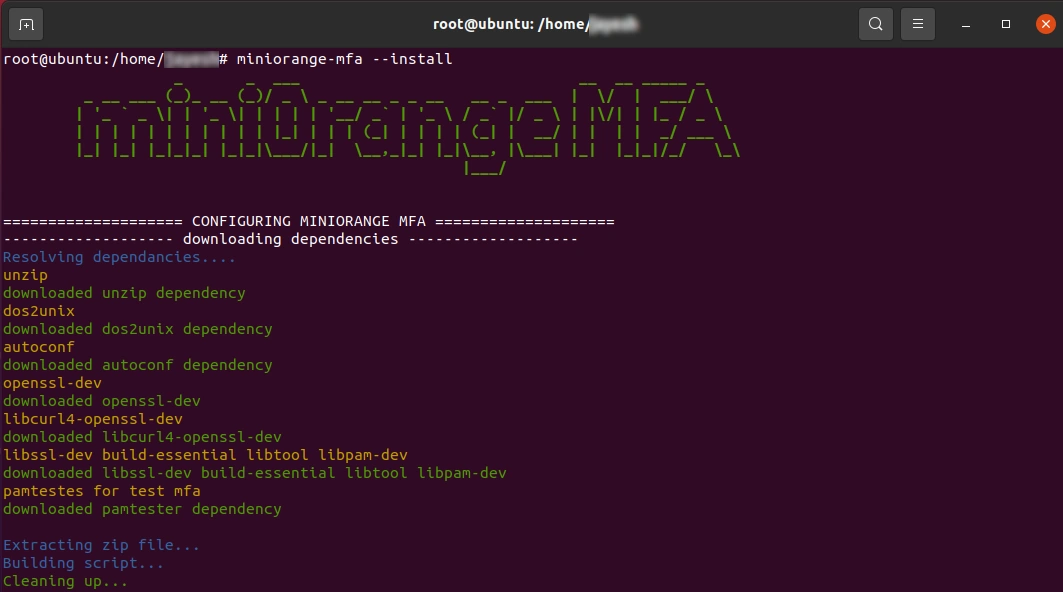
- During the configuration, you will be prompted to enter some details:
- Log in to your miniOrange admin account on Cloud or On-Premise.
- Click on the Settings icon in the top right corner.

- Copy the Customer Key and API key.
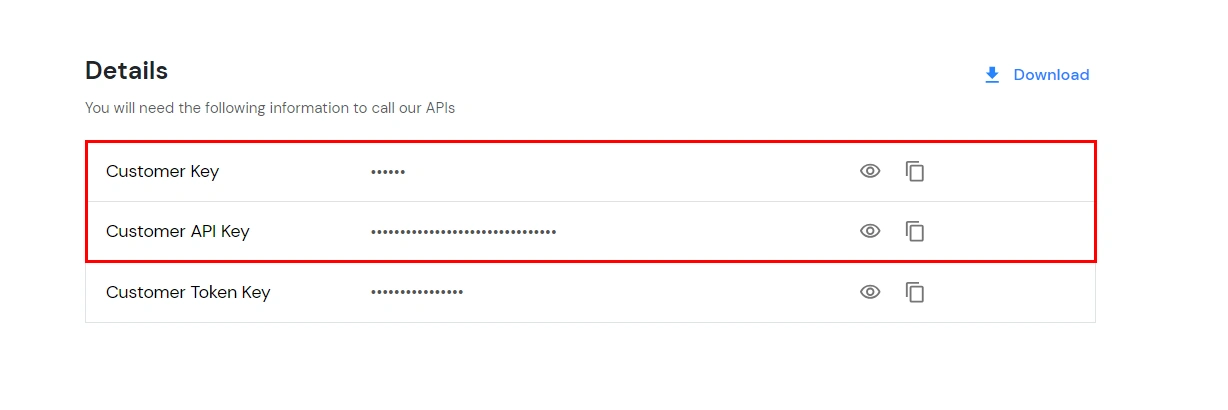
- Navigate to the Apps section from the left side menu and copy the name of the Linux application you created in step 1.

- Paste these details into the terminal when prompted and press Enter.

- You will be asked to enable the MFA on SSH login. If you want to enable the MFA on SSH login then type ‘y’ and hit enter.

- Testing MFA Configuration:
- Test UI Login: Use the command below to test the MFA for the UI login (GDM):
miniorange-mfa --test login <username>

- Test SSH Login: Use the command below to test the MFA for SSH login:
miniorange-mfa --test sshd <username>

- Troubleshooting Issues: If you encounter issues while testing the MFA, use the command below to troubleshoot:
miniorange-mfa --check

4. Test Multi Factor Solution for linux Ubuntu
- MFA module is successfully configured, you are now able to login on the Linux Desktop with an MFA.

- If you enter the correct password it should prompt for the OTP.
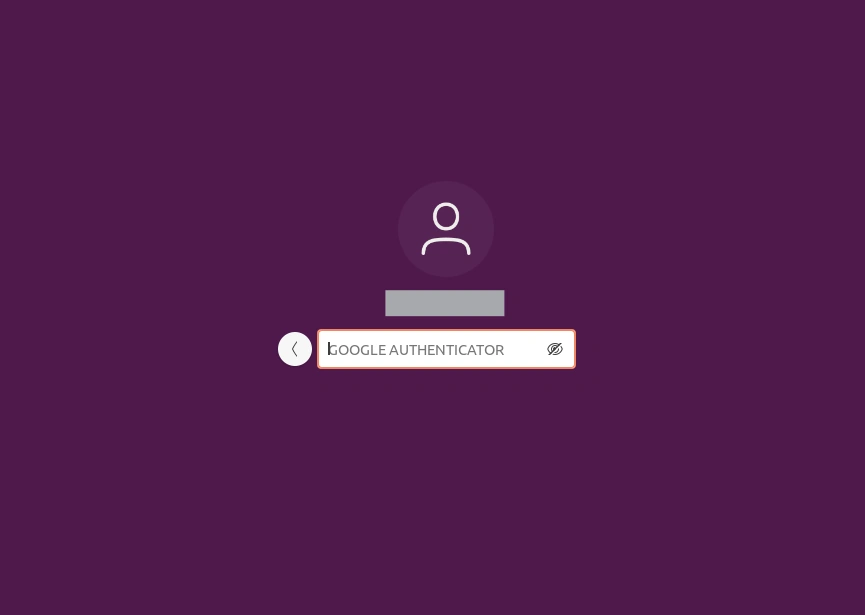
- MFA is prompted after successful password authentication when logging in via SSH.

- To access the manual for miniOrange MFA commands, use the command:
man miniorange-mfa
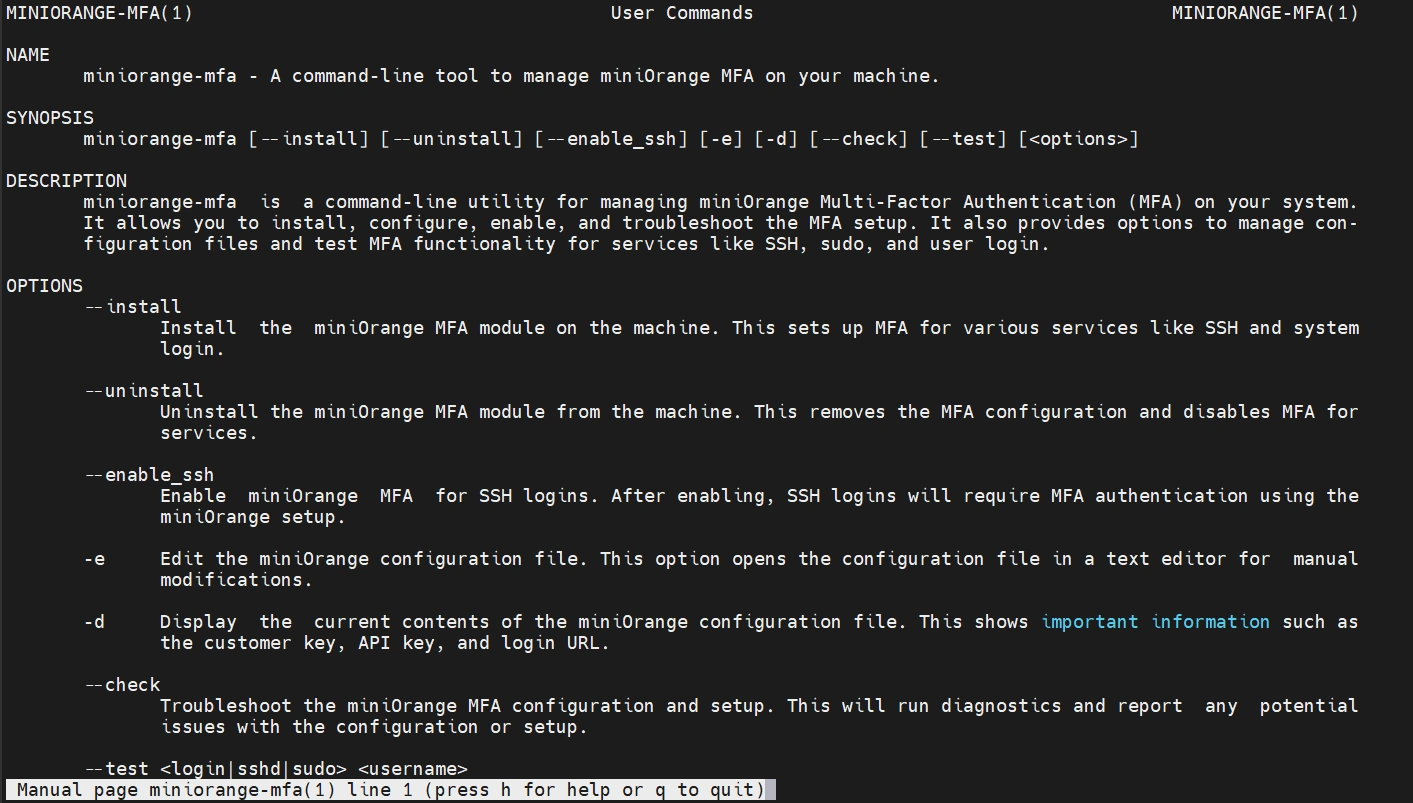
5. Configure Your User Directory (Optional)
miniOrange provides user authentication from various external sources, which can be Directories (like ADFS, Microsoft Active Directory, Microsoft Entra ID, OpenLDAP, Google, AWS Cognito etc), Identity Providers (like Okta, Shibboleth, Ping, OneLogin, KeyCloak), Databases (like MySQL, Maria DB, PostgreSQL) and many more. You can configure your existing directory/user store or add users in miniOrange.
- Click on Identity Providers >> Add Identity Provider in the left menu of the dashboard
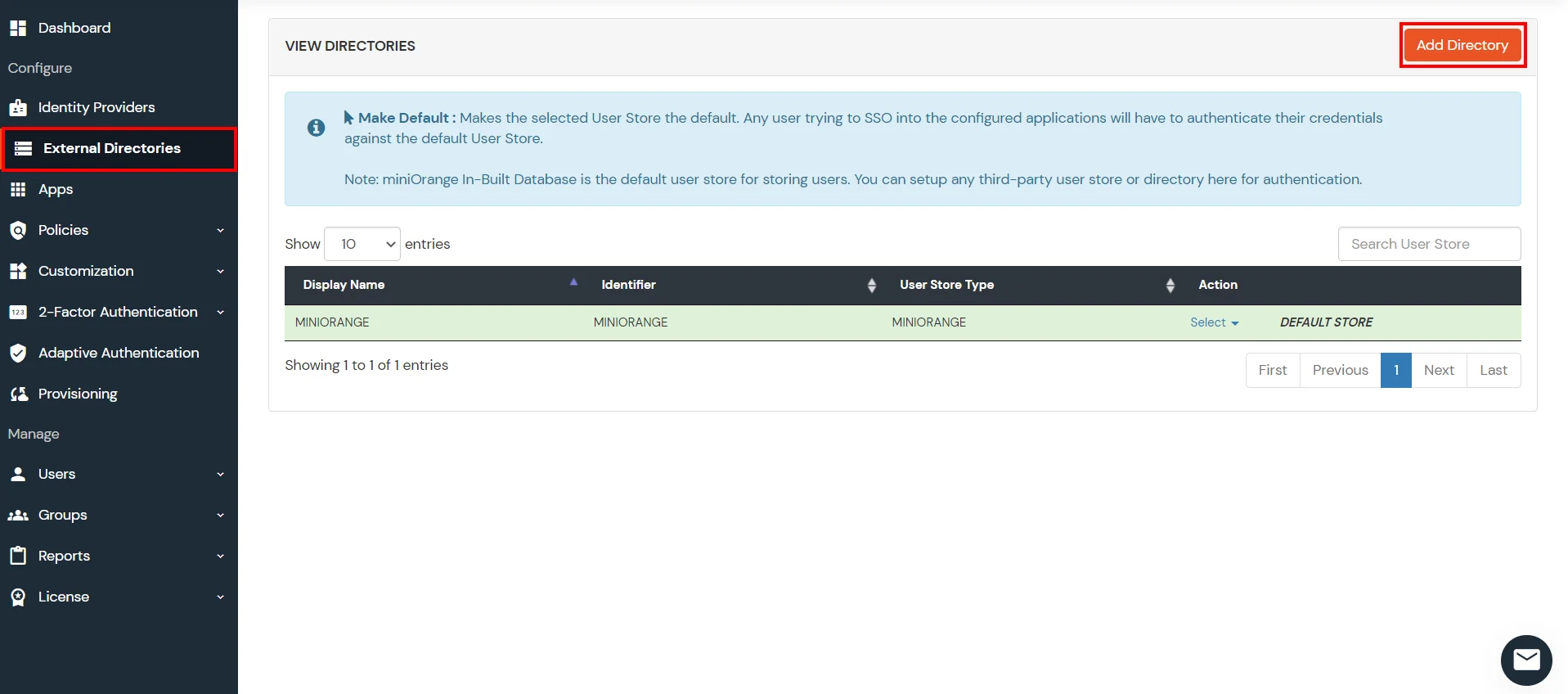
- In Choose Identity Provider, select AD/LDAP Directories from the dropdown.

- Then search for AD/LDAP and click it.
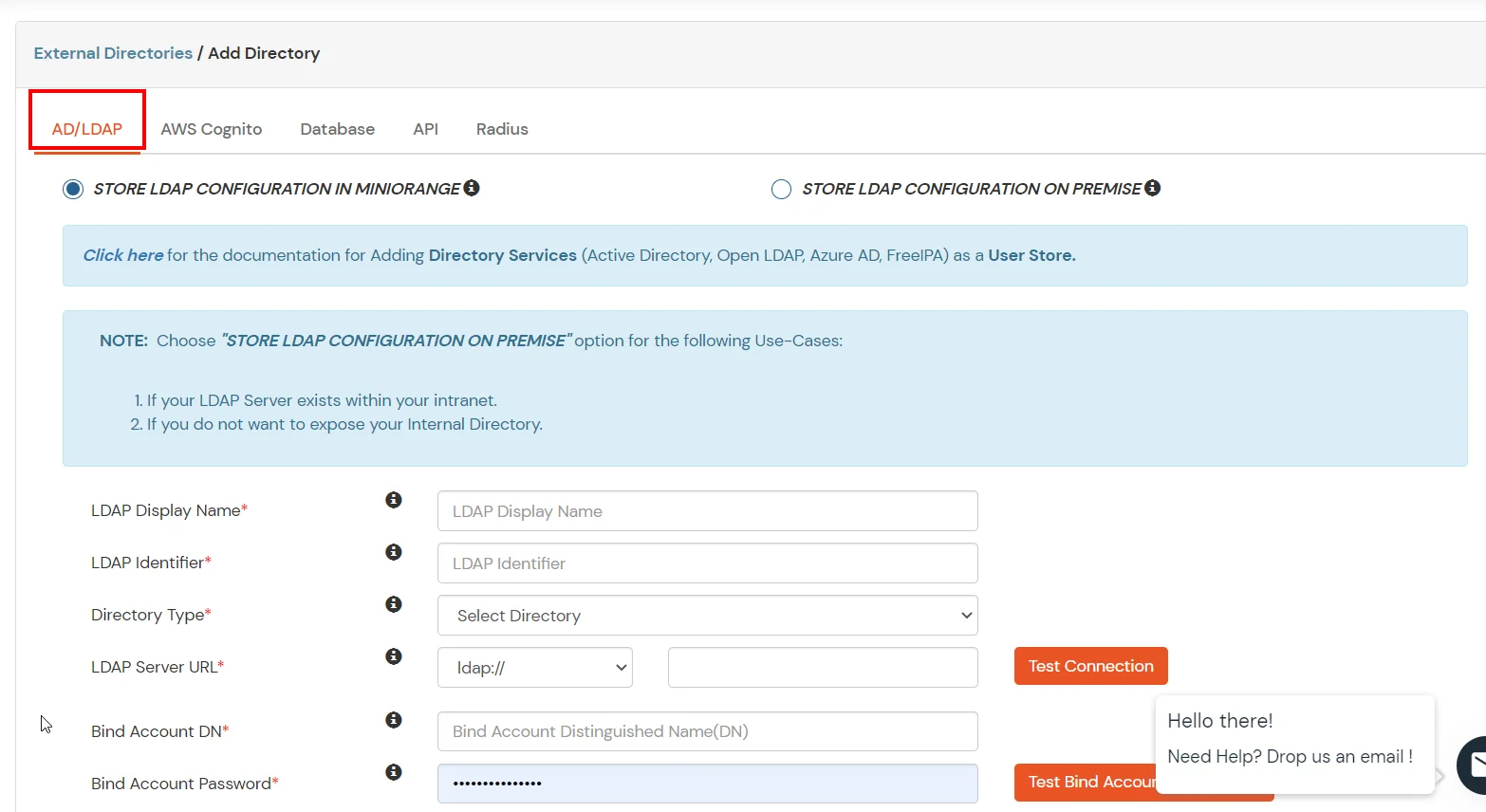
- STORE LDAP CONFIGURATION IN MINIORANGE: Choose this option if you want to keep your configuration in miniOrange. If the active directory is behind a firewall, you will need to open the firewall to allow incoming requests to your AD.
- STORE LDAP CONFIGURATION ON PREMISE: Choose this option if you want to keep your configuration in your premise and only allow access to AD inside premises. You will have to download and install miniOrange gateway on your premise.
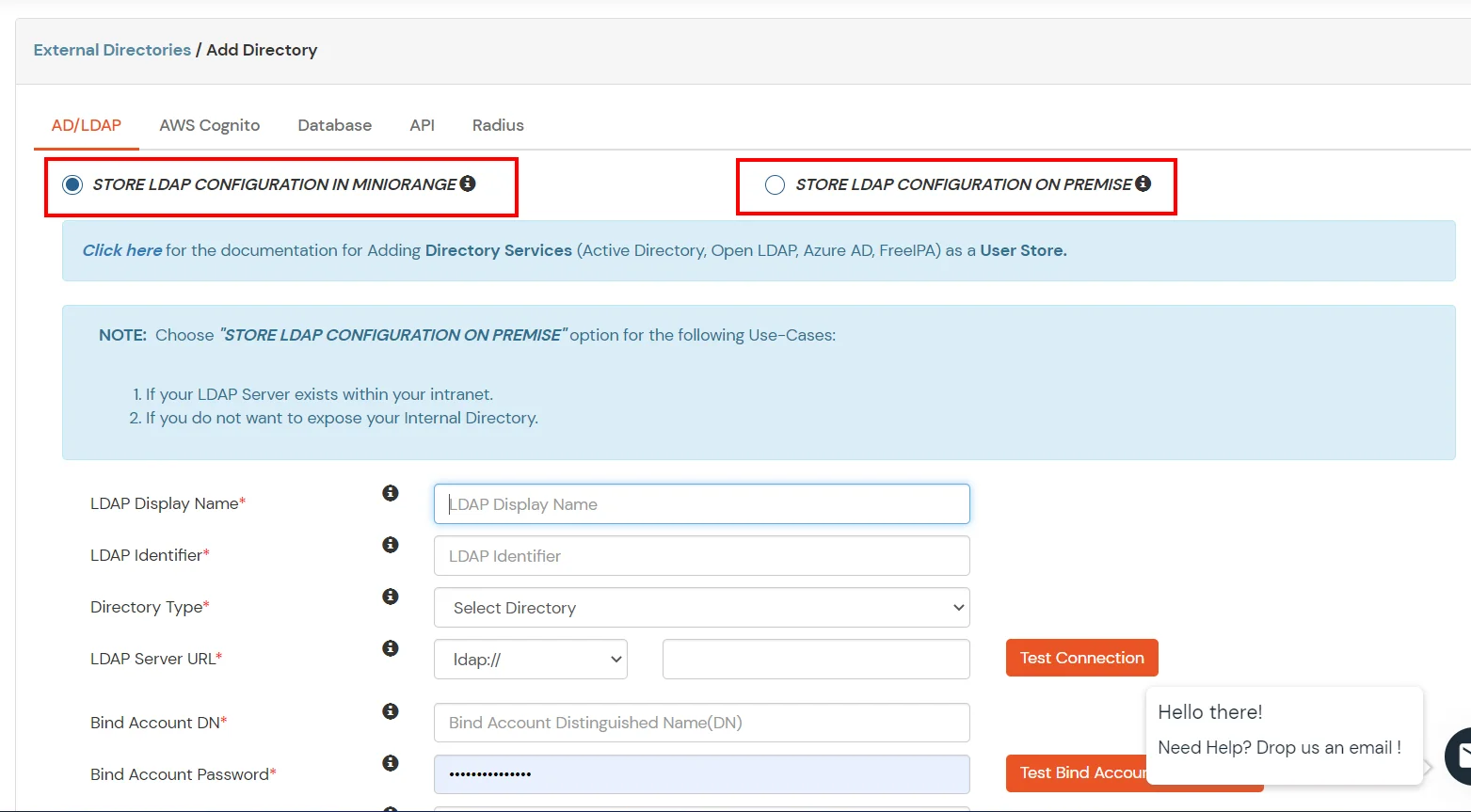
- Enter AD/LDAP Display Name and Identifier name.
- Select Directory Type as Active Directory.
- Enter the LDAP Server URL or IP Address against the LDAP Server URL field.
- Click on the Test Connection button to verify if you have made a successful connection with your LDAP server.
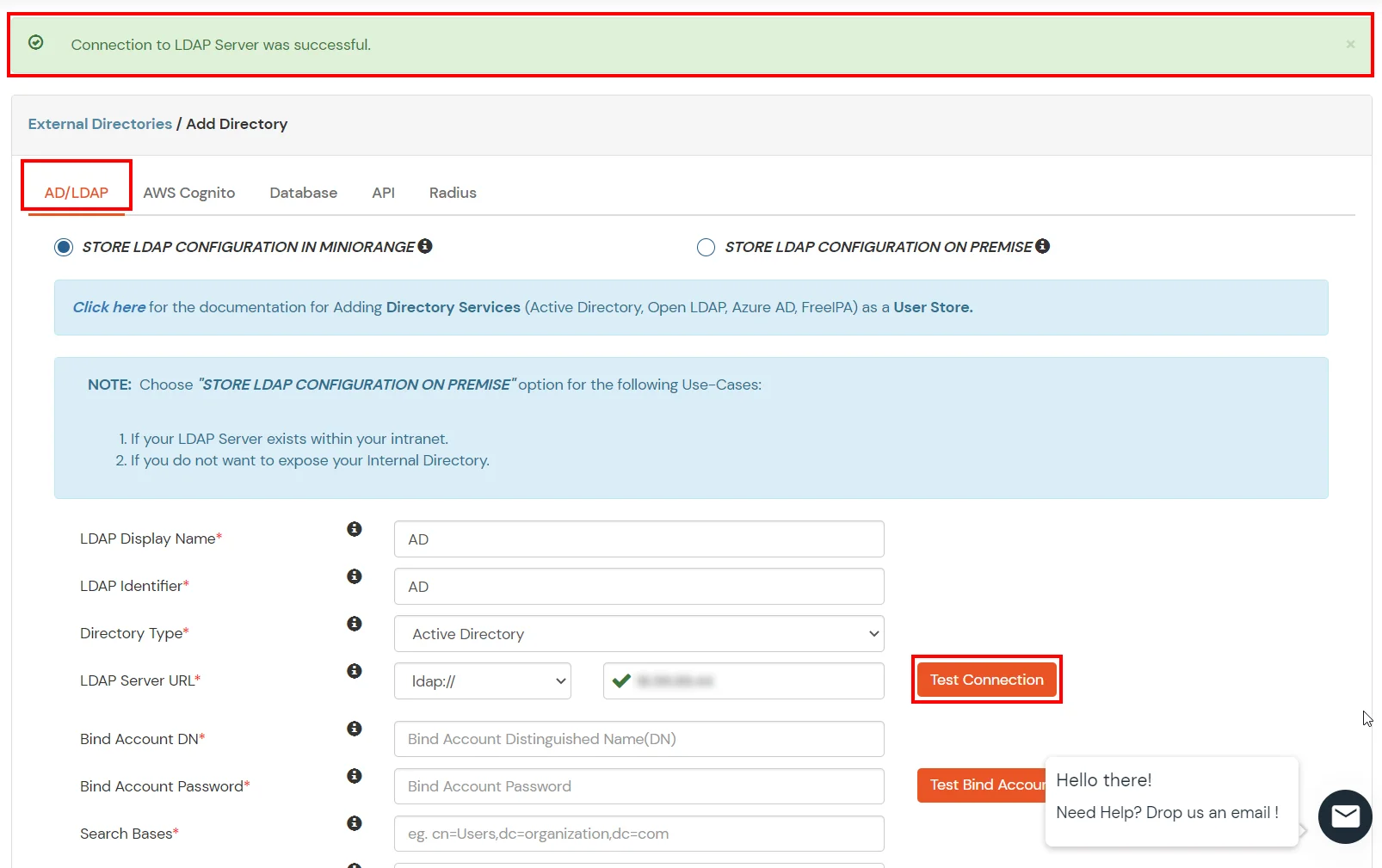
- In Active Directory, go to the properties of user containers/OU's and search for the Distinguished Name attribute. The bind account should have minimum required read privileges in Active Directory to allow directory lookups. If the use case involves provisioning (such as creating, updating, or deleting users or groups), the account must also be granted appropriate write permissions.
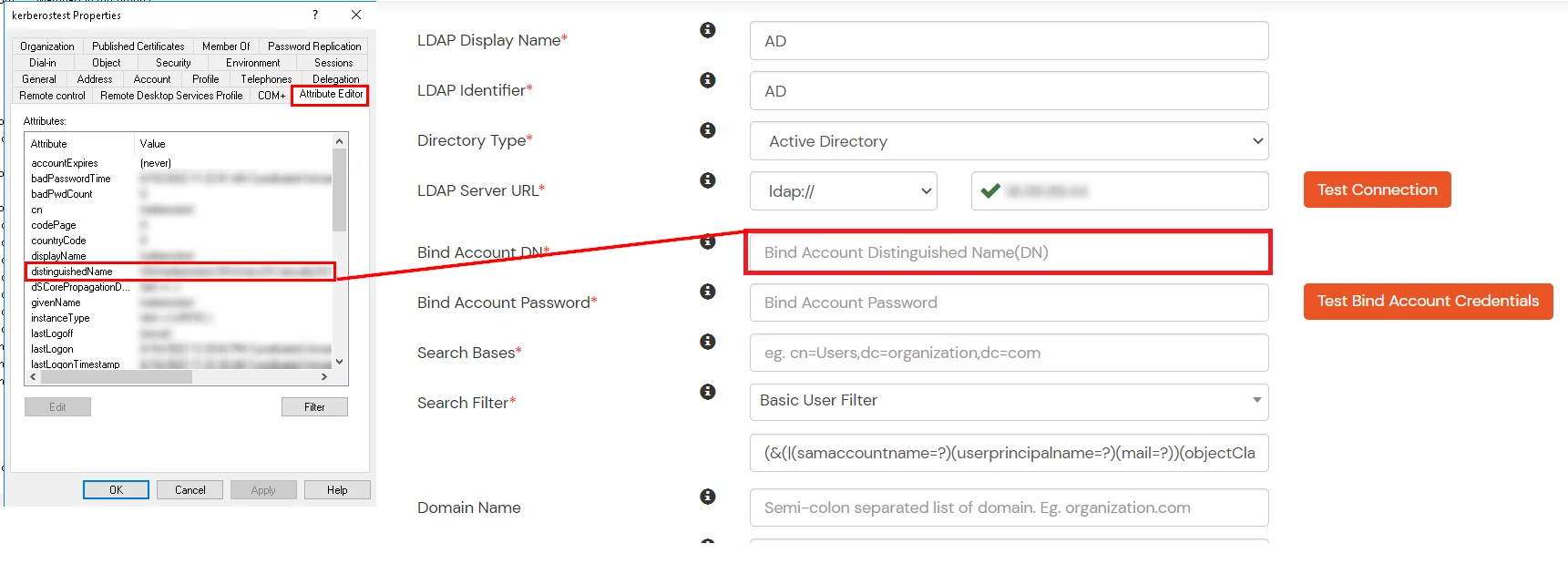
- Enter the valid Bind account Password.
- Click on the Test Bind Account Credentials button to verify your LDAP Bind credentials for LDAP connection.

- Search Base is the location in the directory where the search for a user begins. You will get this from the same place you got your Distinguished name.
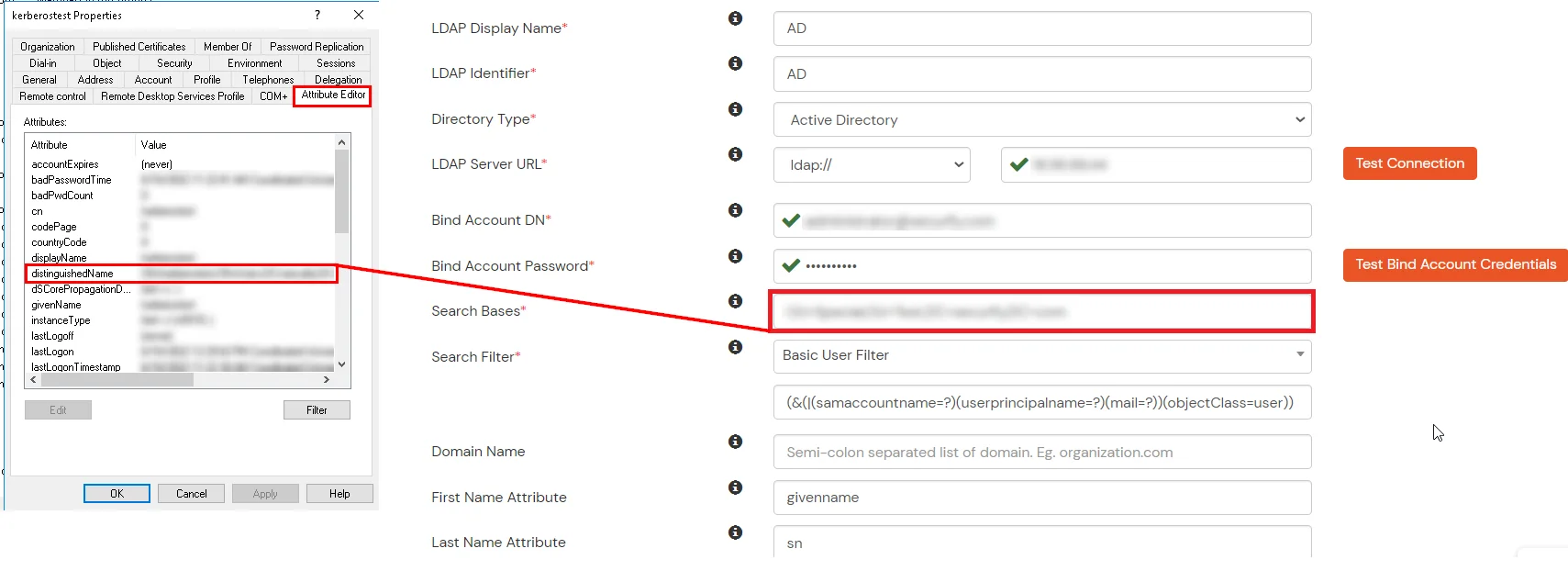
- Select a suitable Search filter from the drop-down menu. If you use User in Single Group Filter or User in Multiple Group Filter, replace the <group-dn> in the search filter with the distinguished name of the group in which your users are present. To use custom Search Filter select "Write your Custom Filter" option and customize it accordingly.
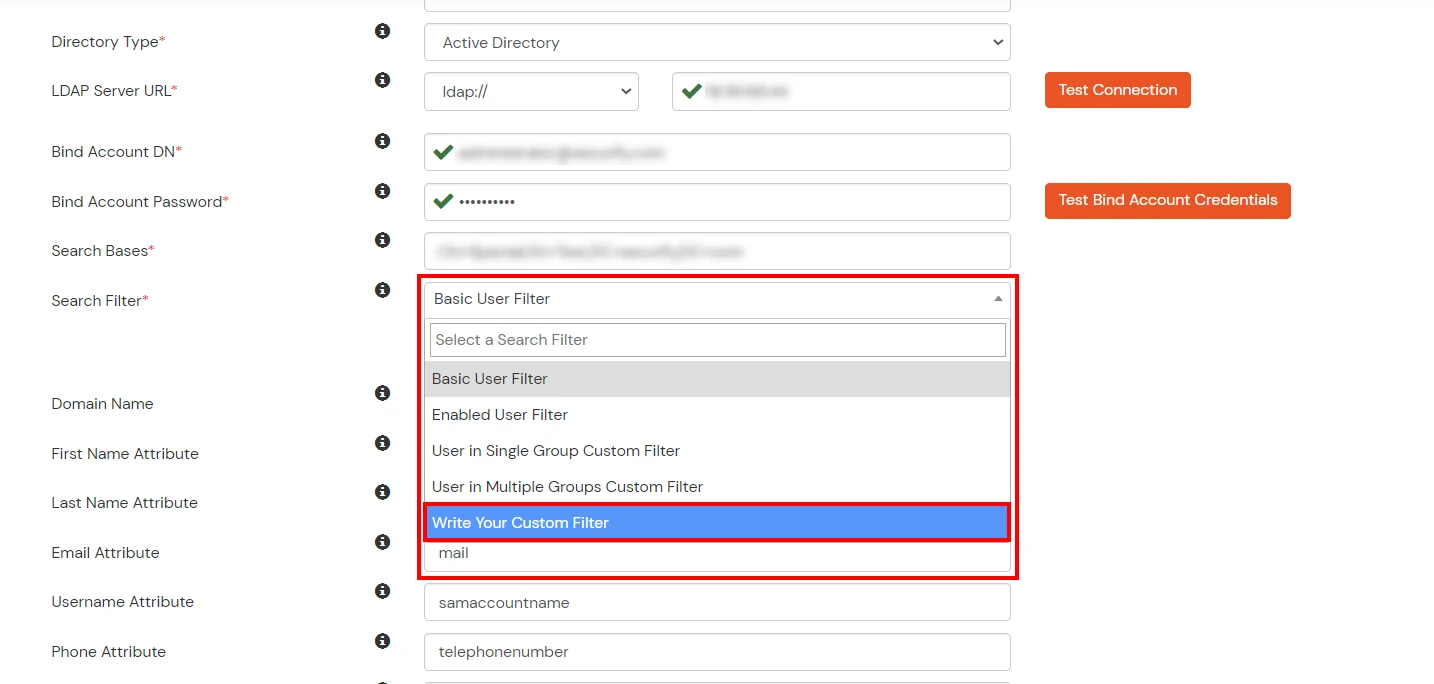
- Click on the Next button, or go to the Login Options tab.
- You can also configure following options while setting up AD. Enable Activate LDAP in order to authenticate users from AD/LDAP. Click on the Next button to add user store.
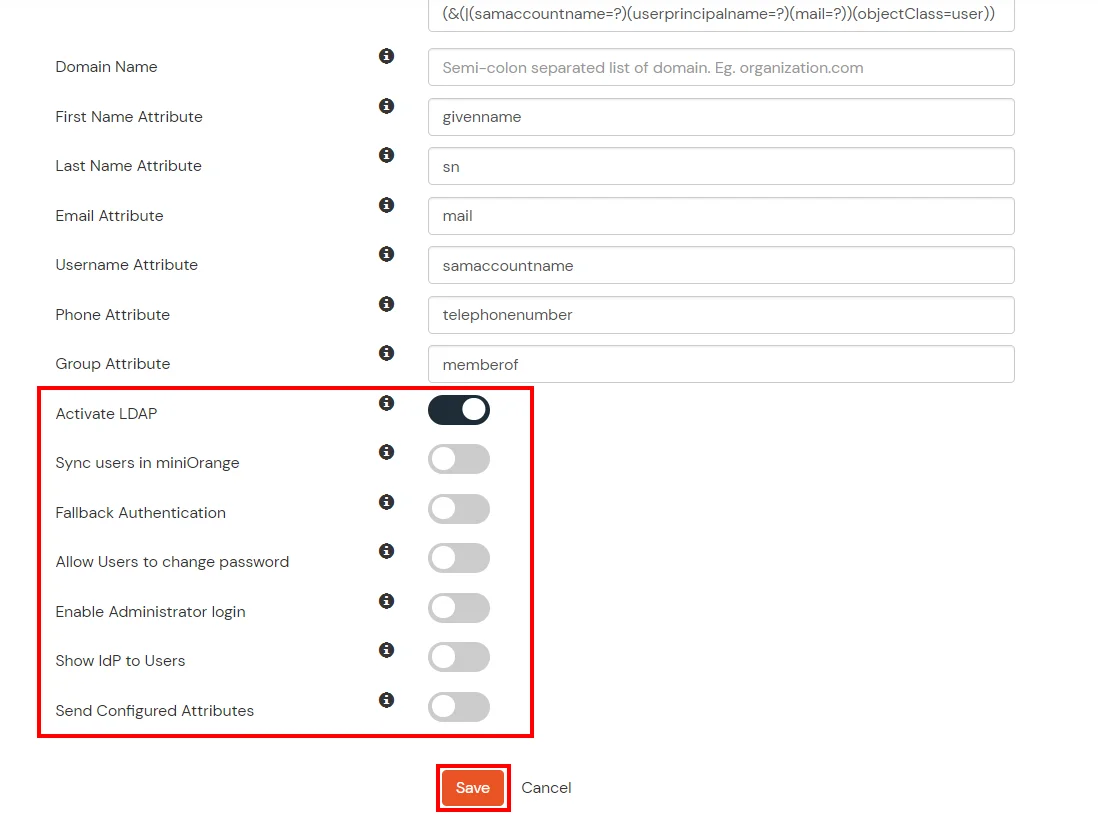
Here's the list of the attributes and what it does when we enable it. You can enable/disable accordingly.
| Attribute |
Description |
| Activate LDAP |
All user authentications will be done with LDAP credentials if you Activate it |
| Fallback Authentication |
If LDAP credentials fail then user will be authenticated through miniOrange |
| Enable administrator login |
On enabling this, your miniOrange Administrator login authenticates using your LDAP server |
| Show IdP to users |
If you enable this option, this IdP will be visible to users |
| Sync users in miniOrange |
Users will be created in miniOrange after authentication with LDAP |
- Click on the Next button, or go to the Attributes tab.
Attributes Mapping from AD
User Import and Provisioning from AD
- If you want to set up provisioning, click here for detailed information. We will skip this step for now.
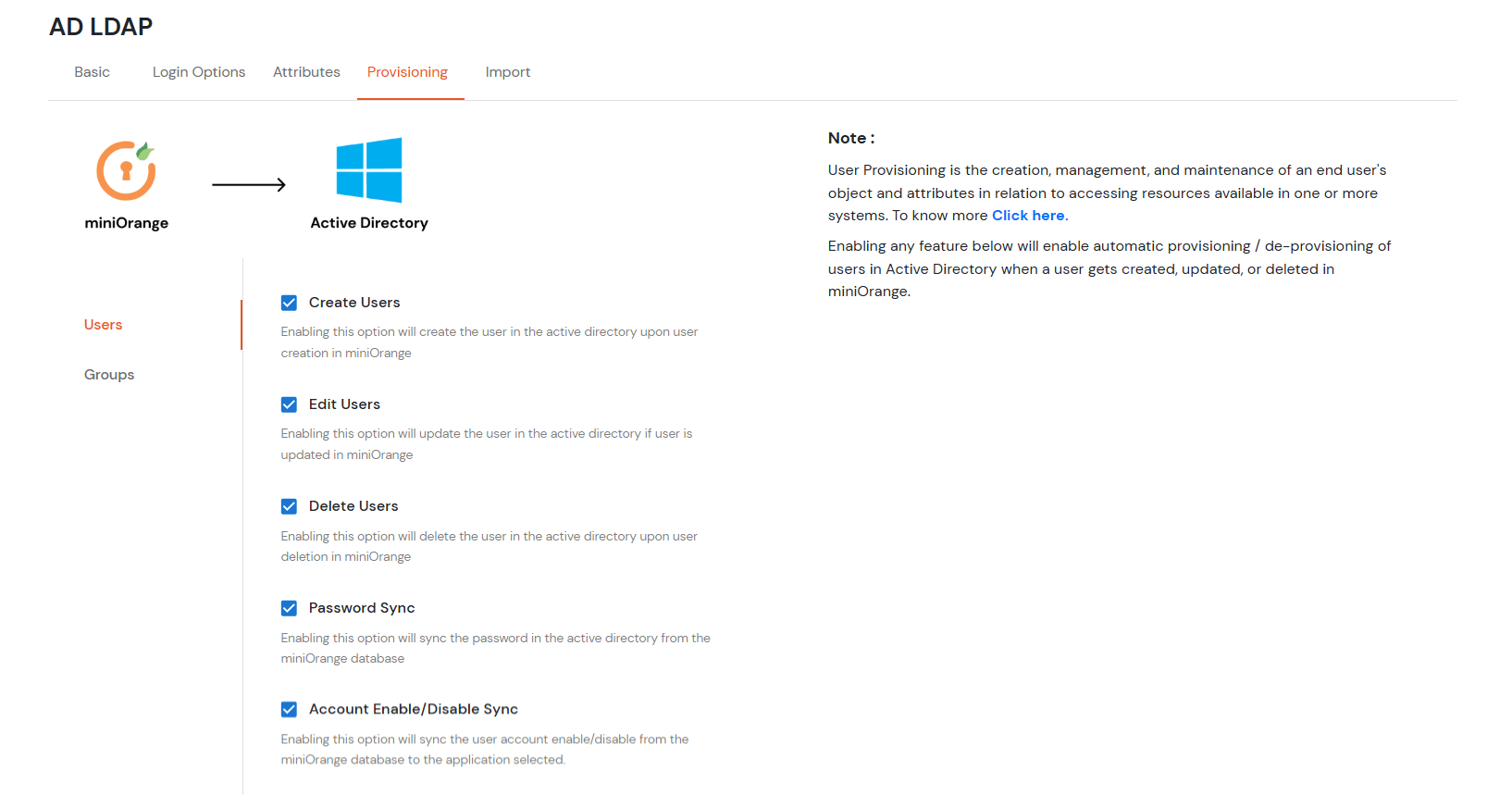
Test Connections
- You will see a list of directories under Identity Providers. From the dropdown, select AD/LDAP Directories, search for your configured directory, click the three dots next to it, and select Test Connection.
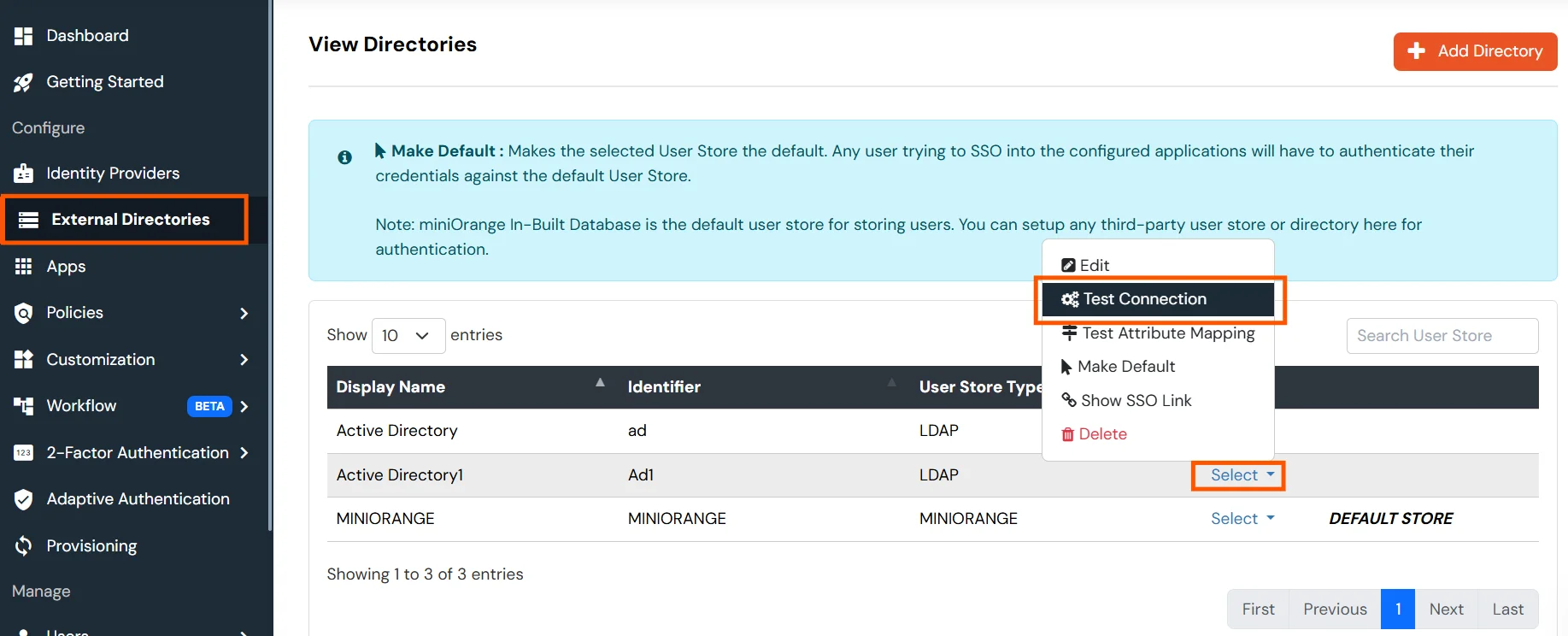
- A pop-up appears prompting you to enter a username and password to verify your LDAP configuration.

- On Successful connection with LDAP Server, a success message is shown.

Test Attribute Mapping
- You will see a list of directories under Identity Providers. From the dropdown, select AD/LDAP Directories, search for your configured directory, click the three dots next to it, and select Test Attribute Mapping.
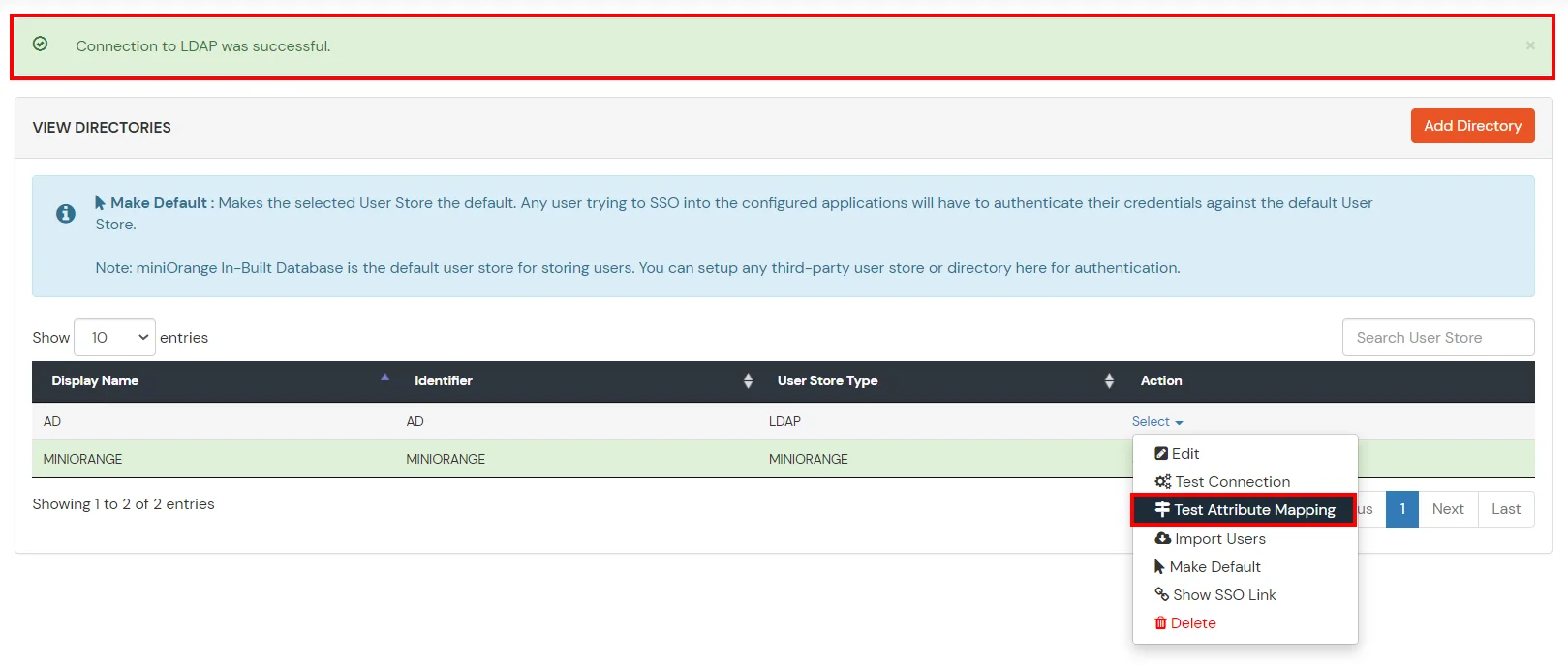
- A pop‑up appears to enter a username and click Test.

- The Test Attribute Mapping Result will be displayed.
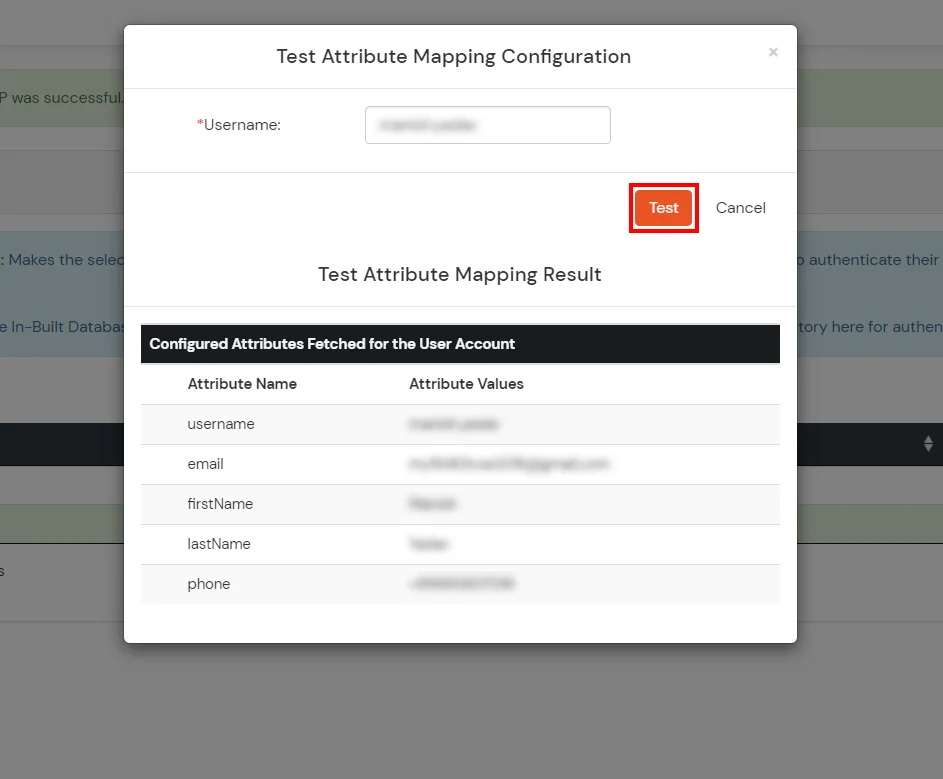
Set up AD as External Directory configuration is complete.
Note: Refer our guide to setup LDAP on windows server.
miniOrange integrates with various external user sources such as directories, identity providers, and etc.
Further References























